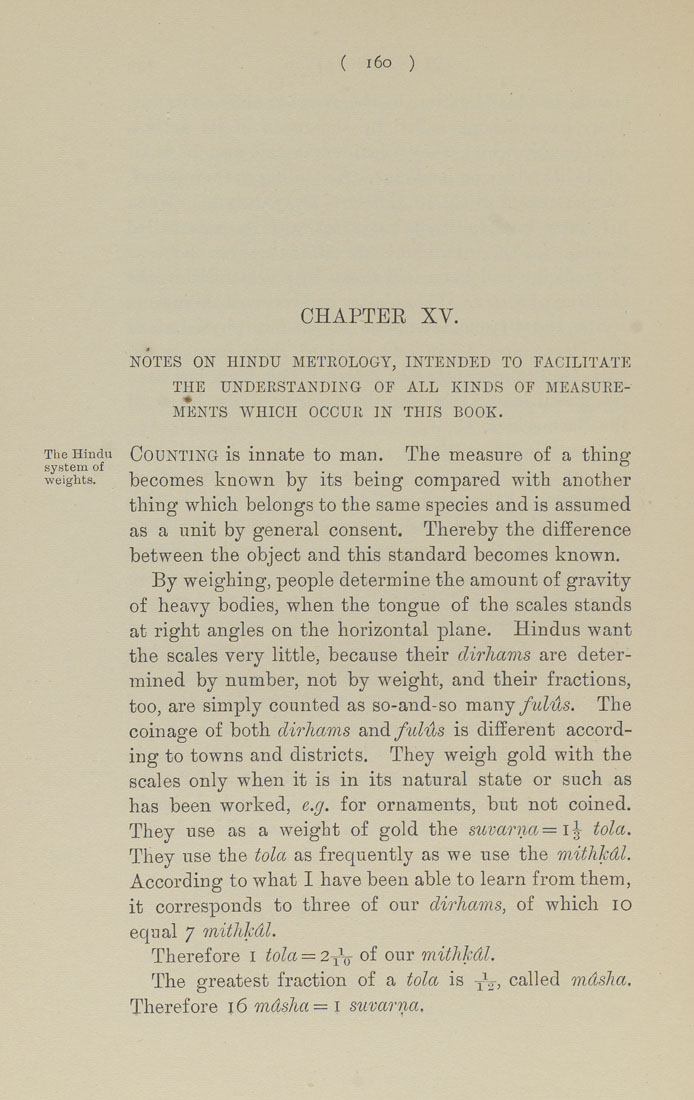Bīrūnī, Muḥammad ibn Aḥmad, Alberuni's India (v. 1)
(London : Kegan Paul, Trench, Trübner & Co., 1910.)
|
||
|
|
|
|
| Page 160 |

( i6o ) CHAPTER XV, NOTES ON HINDU METROLOGY, INTENDED TO FACILITATE THE UNDERSTANDING OF ALL KINDS OF MEASURE¬ MENTS WHICH OCCUR IN THIS BOOK. The Hindu COUNTING is innate to man. The measure of a thing system of .. -i-i i weights. becomes known by its being compared with another thing which belongs to the same species and is assumed as a unit by general consent. Thereby the difference between the object and this standard becomes known. By weighing, people determine the amount of gravity of heavy bodies, when the tongue of the scales stands at right angles on the horizontal plane, Hindus want the scales very little, because their dirhctms are deter¬ mined by number, not by weight, and their fractions, too, are simply counted as so-and-so many/ifZus. The coinage of both dirhams and fitlils is different accord¬ ing to towns and districts. They weigh gold with the scales only when it is in its natural state or such as has been worked, e.g. for ornaments, but not coined. They use as a weight of gold the suvarna—i^ tola. They use the tola as frequently as we use the mithkdl. According to what I have been able to learn from them, it corresponds to three of our dirhams, of which lo equal 7 7nithkdl. Therefore i tola = 2^^ of our mithkdl. The greatest fraction of a tola is yV, called mdsha. Therefore 16 mdsha—i suvarna. |
| Page 160 |







